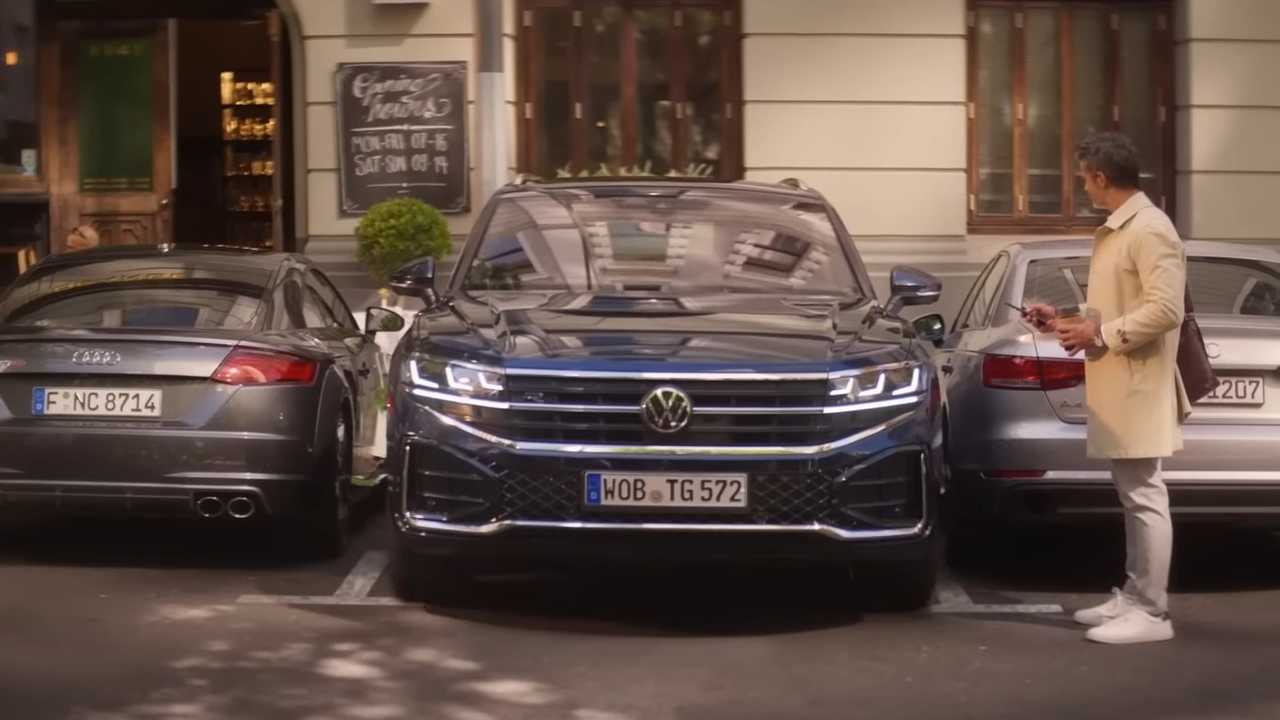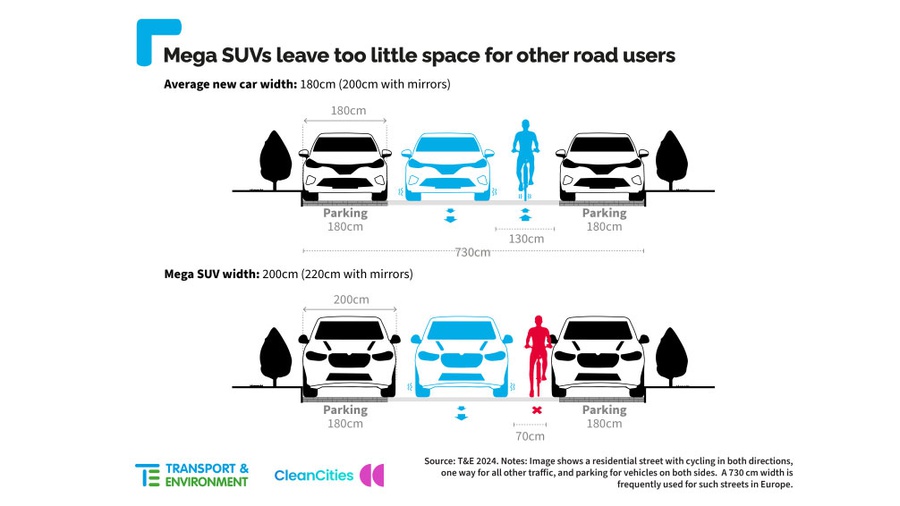According to a new study by Transport & Environment (T&E), the average width of new cars in the EU has now exceeded 180 cm, and around half of sales now exceed this figure.
180 cm is an important threshold because it is a commonly used minimum specification for the width of on-street parking spaces in Europe. If you park in a space that's 180cm wide, vehicles that are wider than that simply won't fit, experts warn. Vehicles that exceed their parking space take up space from people using the pavement, from vehicles travelling on the road, or from both the footpath and the road.
Troublingly, the ever-wider trend is continuing apace with large SUVs and pick-ups that approach or exceed 200 cm. The BMW X5 (200.4 cm), BMW X6 (200.4 cm), BMW X7 (200 cm), Mercedes Benz GLS (195.6 cm), Audi Q8 (199.5 cm), Porsche Cayenne (198.3 cm), Land Rover Defender (199.6 cm), Land Rover Range Rover Sport (199 cm), and VW Touareg (198.4 cm) are being joined by the Mercedes Benz EQS (195.9 cm), Volvo EX90 (196.4 cm), Kia EV9 (198 cm), and BMW XM (200.5 cm). The Dodge RAM, a top-selling American pick-up truck imported into Europe, measures up to 208.5 cm in width, overshooting 180 cm-wide parking spaces by almost 30 cm.
The current EU maximum width applied to all vehicles, 255 cm, was enacted to limit the expansion of buses and trucks in the mid 1990s – and was never truly intended for cars.
T&E points out that a review of the maximum width limit for light vehicles (cars, crossovers, SUVs, pick-ups and vans) is essential to protect public space from further encroachment, including footpaths, roadway and adjoining parking. Such a review must also consider the road safety risks posed by ever-wider SUVs, particularly since increased width enables the height of the vehicle to be further raised. Vehicle fronts raised by 10 cm carry a 30% higher risk of fatalities in collisions with pedestrians and cyclists.
Source: T&E


